Let’s check out the list of the most popular Linux distros in August 2022, in case you are planning to switch to Linux OS.
Unlike Windows and macOS, Linux is not just owned by some single brand instead it is free & open source and even offers multiple choices. Yes, of course, the Linux kernel is the thing that is common in all distros, so what makes them different? It is – features, ease of usage, updates, security, lightweight, packages, and interface. Although among regular Desktop users, Linux is not in majority, however, if we talk about servers then most of them are powered by Linux OS such as RedHat, Ubuntu, Debian, OpenSUSE, and others. Therefore, whether you are a student, administrator, developer, or just a typical user who likes to explore Linux distros, here is the list of some most downloaded and popular Linux distros of August month in 2022. Have a look…
10 Best Linux distros in August 2022
Note: The given arrangement of Linux distros is not feature-wise instead the number of times they have been downloaded in August 2022.
1. Linux Mint or LDME
One of the reasons it might be one of the most popular Linux distros is its user-friendly interface and Debian packages support. Because of the Windows-like interface, most users can easily adapt Mint to carry out their daily computing tasks. It is available in two editions one is based on Ubuntu and the other Debian. Although users won’t feel any difference between them, however, the difference in the repository will be there. LMDE – Linux Mint Debian edition uses the package repository of Debian while the regular Linux Mint is of Ubuntu.
The installation of various open-source software can easily be done using the GUI Software manager of Mint. By default it uses the Cinnamon desktop interface, however, XFCE is also available for those who want a lightweight Mint.
Benefits of the Mint:
⇒ Uses LTS Ubuntu or Debian, hence users can rely on Mint for a very long time without changing the version.
⇒ Familiar Windows Like Interface, hence best Linux distro for home users
⇒ Easy to install
⇒ Supports a wide range of old and modern hardware.
⇒ GUI Software manager for installing and updating software
⇒ Secure
⇒ Large Debian and Ubuntu community support
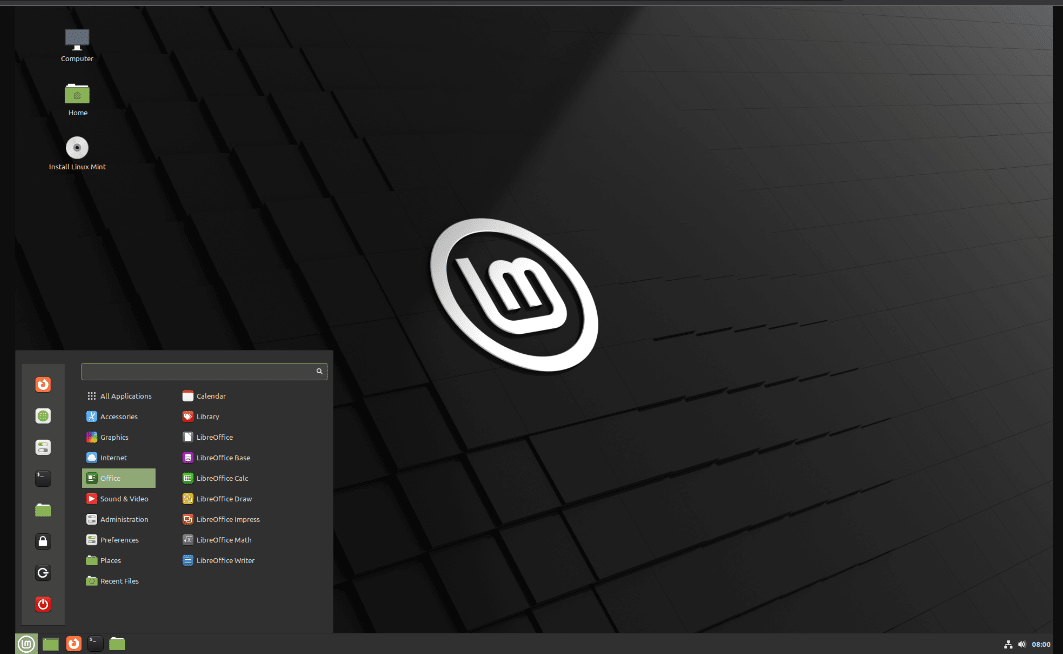
2. MX Linux
MX Linux is now one of the popular and widely used consumer Linux operating systems for Laptops and Desktops. It offers snappy performance better than Ubuntu; an easily manageable and stable Linux operating system based on trustworthy Debian Linux. This also makes it an optimal choice because you will not have only compatibility with thousands of Debian packages but also huge community support.
It is developed by the developer’s community of antiX and MX Linux. Available with XFCE, KDE, and Fluxbox desktop environments. All the needed software you will find in it, out of the box. And if the one that you want to need is not there, then use its fast Package Installer to get the application via MX Test Repo, Debian Backports, and Flatpaks.
Benefits of MX Linux
⇒ A Light Mid-weight OS
⇒ Snappy performance
⇒ Available with XFCE, KDE, and other Linux environments
⇒ Fluxbox MX Linux edition is available to run Linux on the oldest systems without putting much stress.
⇒ It supports a huge number of applications.
⇒ Supports various Wifi drivers.
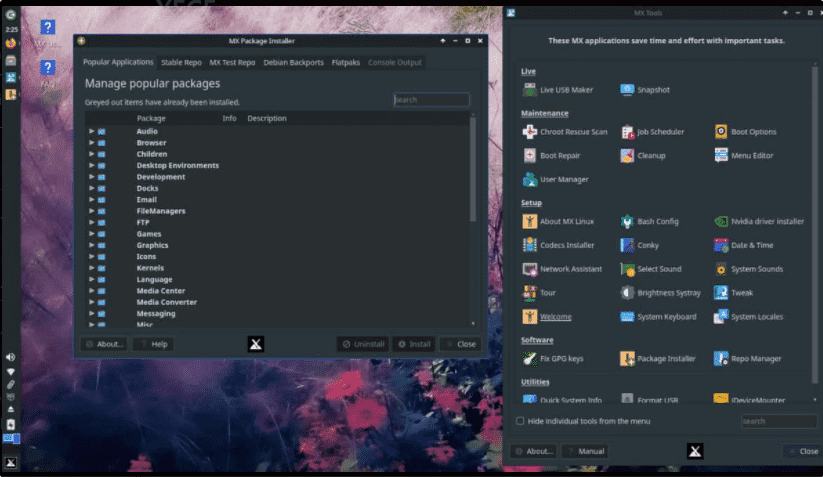
3. EndeavourOS
EndeavourOS is a rolling Linux distribution based on Arch Linux. It is also the successor to Antergos. Both distributions share the goal: A user-friendly Linux system, based on Arch. However, Endeavor does not want to be the Ubuntu among the Arch-based systems. Rather, it addresses users who are familiar with Linux but do not want to endure the tedious installation process of Arch.
Instead of too many customizations and defaults, EndeavorOS wants to ensure that users design their Linux journey themselves. It doesn’t matter whether you’re a “distro hopper” or a die-hard Arch Linux fan – the possibilities are endless. The system grows with you but focuses on the terminal. The installation with Calamares is quick, but the system does not come with a package manager with a graphical interface.
With the online installer, users can choose between the desktop environments Xfce, Mate, LXQt, Cinnamon, Plasma, Gnome, Budgie, and the window managers i3-WM, BSPWM, and Sway.
Benefits of EndeavourOS
⇒ Rolling Linux distro, hence always up to date
⇒ Easy to install Arch distribution
⇒ Online installation allows choosing between eight desktop environments.
⇒ Offers five community editions.
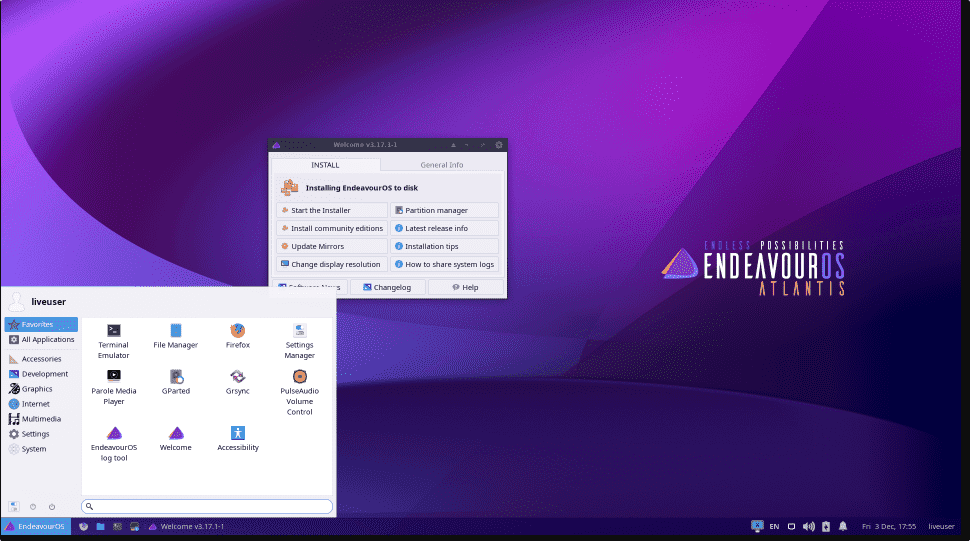
4. Manjaro
The best alternative to EndeavourOS based on Arch Linux is Manjaro. A quite popular Arch derivative tweaked to provide high performance and the ability to install a wide range of packages from Snap, Aura, Flatpak, and the system’s default repos. It has a very easy to used Application manager that allows us to install thousands of packages and even let us build from sources.
While Arch Linux requires a self-guided installation, Manjaro will guide you through a graphically designed and simple setup. The XFCE desktop interface can be further customized using the included programs, icon packs, and themes.
Popular and frequently used programs such as Libre Office, Firefox, Steam, and Thunderbird are already pre-installed and thus offer the user a simple out-of-the-box experience – you can start working immediately after installation without major optimization.
Benefits Manjaro
⇒ WebApp Manager and Calamares Installer
⇒ Rolling Linux distro
⇒ In-built Application and repo manager
⇒ Tons of software packages to install from source directly using GUI software manager
⇒ Arch User Repository (AUR), SNAP, and Flatpak in one place
⇒ Available in Multiple desktop environments
⇒ High performance
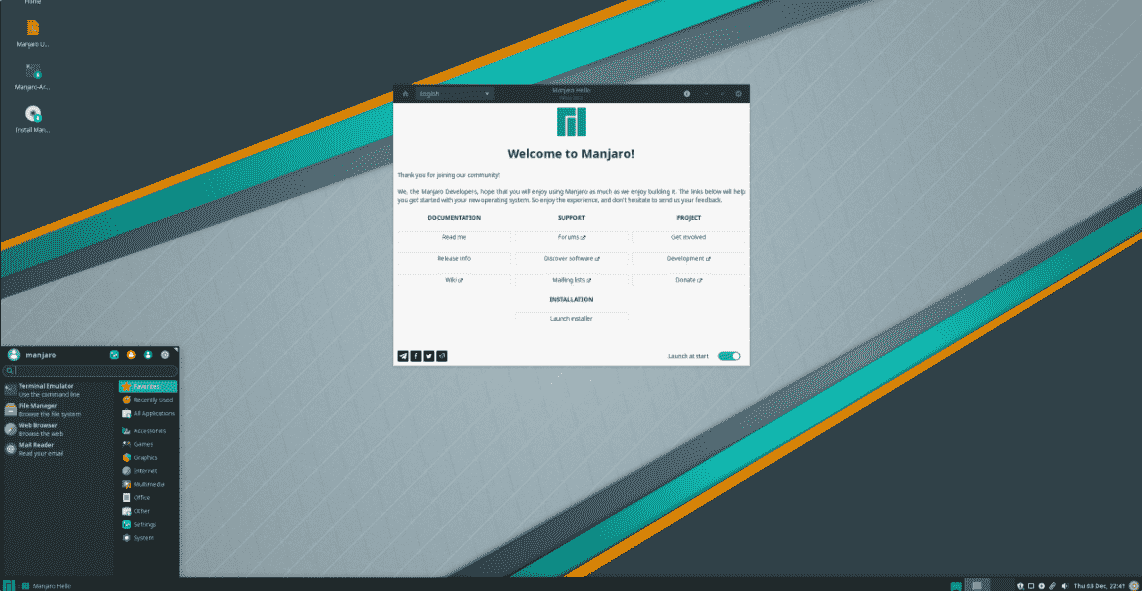
5. Pop!_OS
Pop!_OS is a Linux distribution that is already equipped with optimized drivers for Nvidia graphics cards as well as for Intel and AMD GPUs. It is based on Ubuntu, hence you can rely on the APT package manager, which reliably utilizes the Debian packages. In addition, Flatpak is integrated into the system and in addition to APT, the Pop’s App Store is also here.
The Linux system is very easy to set up, especially if you want to play games on Linux. In addition, “Pop_OS” offers many pre-installed programs such as Firefox, LibreOffice, and some multimedia tools.
Other applications can also be conveniently added via package management (“Pop!_Shop”), whereby the focus here is primarily on education, software development, and gaming.
Well, “Pop_OS” is based on Ubuntu, however, its Gnome interface is customized and not like Ubuntu, and on top of that, it offers its management of workspaces. This is handy when many applications are open in parallel.
In addition, the hard disk is encrypted by default during installation and security patches are automatically applied.
Benefits of POP! OS
⇒ Based on Ubuntu, hence will have LTS support
⇒ High Performance
⇒ Develop software out of the box
⇒ Encryption out of the box
⇒ Pop!_Shop- GUI app store to install software from Ubuntu and Flatpak repos
⇒ Also available for Raspberry PI
⇒ Steam, Lutris, and GameHub for Gaming
⇒ Offers Toggle between battery-saving and high-powered graphics
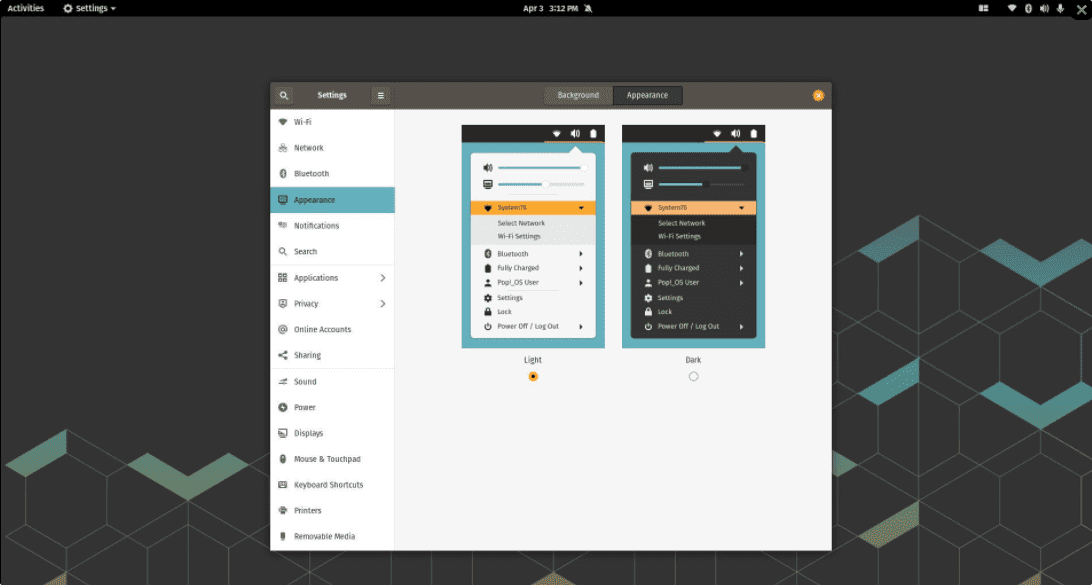
6. Ubuntu
Ubuntu is an old buddy powering millions of Desktops and servers. It doesn’t need an introduction if you are familiar with Linux distros.
It is one of the popular choices to install on your desktop or laptop. It comes out of the box with SNAP and APT package manager to install various packages. And due to its huge community support and tutorial available online, new users can easily learn how to operate it.
However, for Desktops, Ubuntu is not the only preference of users now, there are many other competitors now in the market but on-servers, Ubuntu is still one of the best options to rely on.
Benefits of Ubuntu
⇒ Long-term support
⇒ A huge community to help
⇒ APT package manager to install Debian packages
⇒ Snap out of the box
⇒ GUI Software store to install applications
⇒ Easy to install and handle
⇒ Pre-installed with software to carry out most of the day-to-day task
⇒ Most of the paid and free applications are available in Ubuntu even though they are not for other Linux OS.
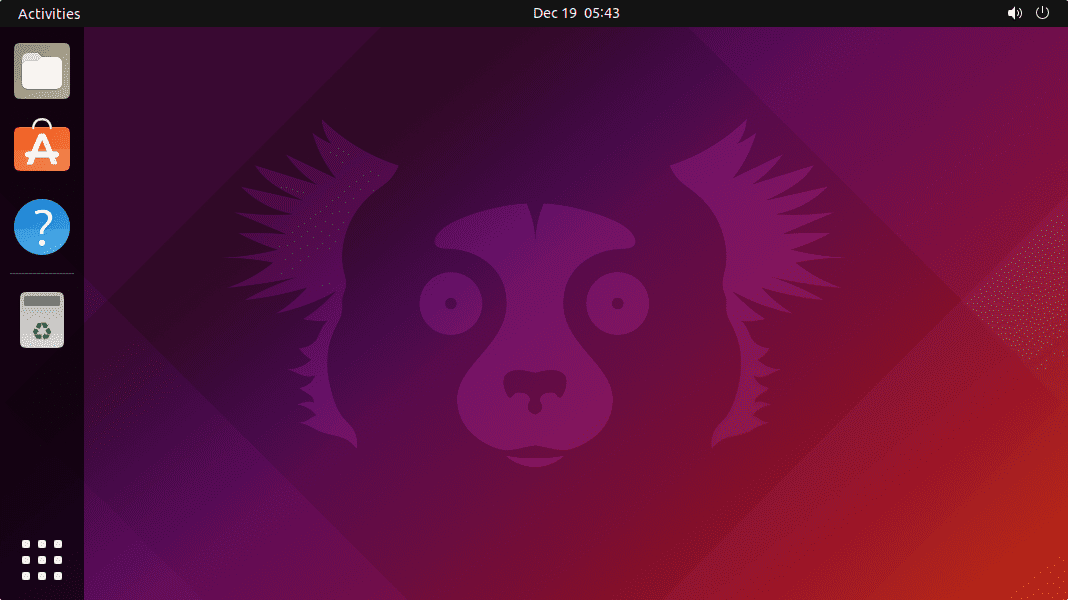
7. Fedora
The developers of the paid Linux Red Hat also have a free Linux version on offer: Fedora. It is community-based and quickly adopts technical innovations. Tested and proven functions are then transferred to Linux Red Hat, which is offered to companies.
“Fedora Workstation” is aimed at the private user and scores with particularly good security functions. The software and features are usually up-to-date, therefore those developers who want to try out bleeding-edge software can go for Fedora. Compared to Redhat and CentOS Stream, the repository offers a wide range of software.
Apart from the Workstation editions, others are Server, IoT, CoreOS, and Silverblue. Fedora has extensive libraries, and tutorials and offers a 2-year life cycle support that offers better support for tools and applications. Fedora is always on the rollout for the latest open-source features, driver updates, and software.
Benefits of Fedora:
⇒ Always up to date
⇒ Access to vast software packages
⇒ Integration of new technologies
⇒ Multiple editions
⇒ Huge Community support
⇒ Supports RPM packages
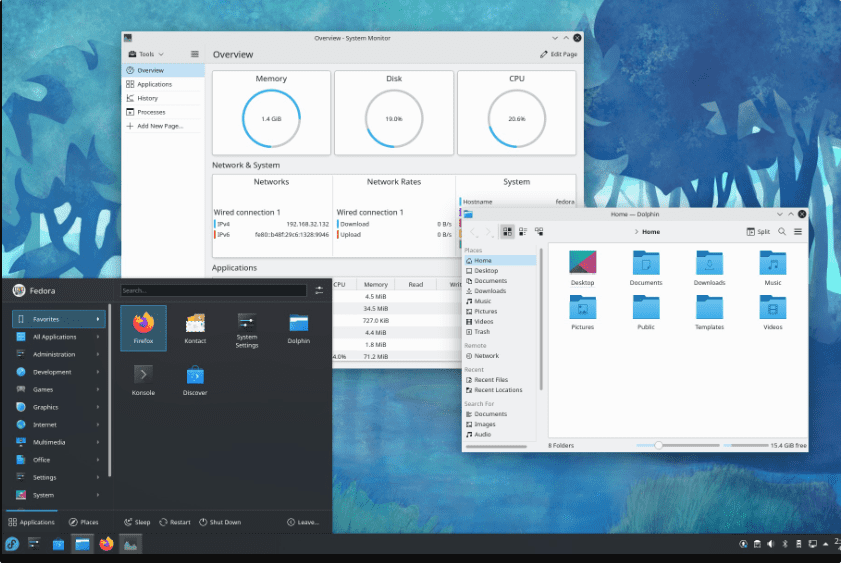
8. Debian
Debian is the ultimate Linux operating system known for its stability and ease of usage. If you are already a user of Ubuntu then no need to switch to Debian, however, beginners can opt for it. Debian GNU/Linux is more than just an operating system: it contains several thousand software packages, i.e. pre-compiled software in the form of easy-to-install packages. Unlike other Linux distributions, Debian GNU, much like the actual Linux kernel, is compiled by a large group of volunteers around the world.
Benefits of using Debian
⇒ Long-term update support
⇒ Extremely stable
⇒ Developed from scratch
⇒ Huge community support
⇒ Debian includes over 50,000 packages
⇒ Security
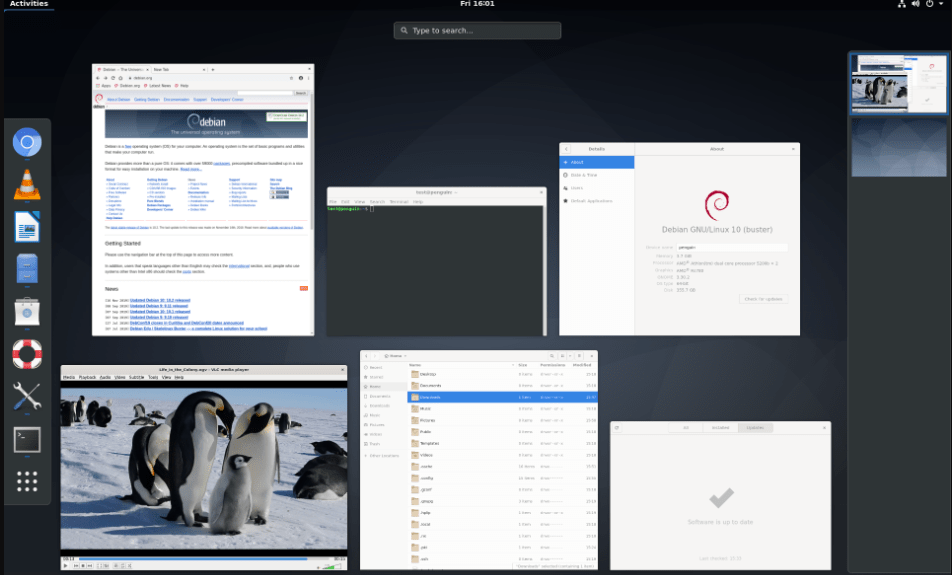
9. Garuda
The still very young distribution Garuda Linux is a derivative of Arch Linux, which has been tailored as a rolling release with the latest software packages and graphics APIs as well as interesting detailed solutions and useful “tweaks”, especially to the needs of players.
The focus on gamers is reflected, among other things, in “Garuda Gamer”, a GUI for installing curated gaming software, which in addition to the Windows-compatible runtime environment Wine and the FOSS game manager Lutris, also offers Steam, PlayOnLinux, and corresponding configuration tools, using which, for example, Valve Proton can be precisely adapted.
Additional drivers and kernels can be installed via their own dedicated GUI, software comes to the system, typical for an Arch derivative, via binary packages using the package management Pacman. In addition to the repositories of Arch Linux, the Arch User Repository (AUR) Chaotic-AUR is also available.
Benefits of using Garuda
⇒ Crafted especially for gamers
⇒ Out-of-the-box tools needed for gaming
⇒ Arch based
⇒ Extensive customization support
⇒ Arch User Repository (AUR) repository
⇒ GUI Software manager
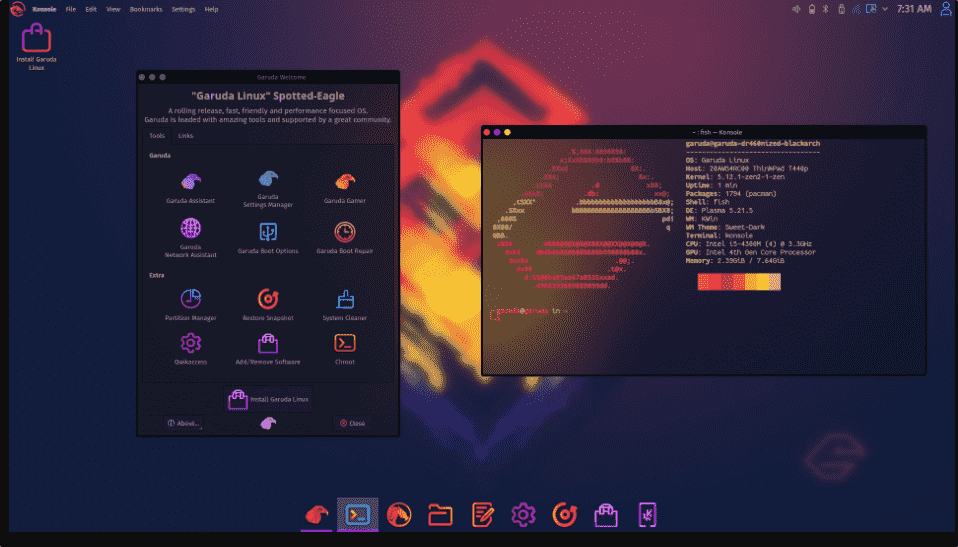
10. openSUSE
“OpenSUSE” is a Linux distribution that is particularly suitable for use on workstations and servers. The operating system already has pre-installed programs such as the official application “LibreOffice”, the “Firefox” browser, and the image editing software “GIMP”. Additional multimedia tools and games complete the range of functions of “OpenSUSE”. With the package manager “Zypper” you can download new programs on request and keep the existing software up to date.
The Linux distribution supports multiple desktops and offers KDE, Gnome, XFCE, and LXDE to choose from when installing.
For security, AppArmor is available and allows programs to be given or revoked individually certain rights. Instead of Ext4, Btrfs is used by default, whereby XFS is suggested for a separate home partition.
As openSUSE is based on the Suse Linux Enterprise Server. openSUSE Leap focuses on a stable operating system that is constantly updated via security updates and receives packages with new features only periodically. As a target group, the manufacturer sees those who do not immediately need the latest functions but need a stable system, such as normal Linux users, administrators, and system manufacturers. At the same time, another edition of it is openSUSE Tumbleweed. With it, the developers offer a rolling release of openSUSE, which is always up to date and offers the latest stable packages for the Linux kernel, Git, Office, and Samba, among others.
Compared to openSUSE Leap, there are continuous security updates and feature upgrades in Tumbleweed. Accordingly, the manufacturer, the software developers, power users, and contributors to openSUSE as a target group for Tumbleweed, who always want the current status of the packages and functions.
Benefits of using openSUSE
⇒ Two editions in parallel for the different user group
⇒ Offers a wide range of packages to get installed using the Zypper
⇒ GUI package manager App
⇒ Option to choose between multiple Dekstop environments while installing it
⇒ Derived from an Enterprise Linux
⇒ Meant for both Desktop as well as server users
⇒ YaST for system administration
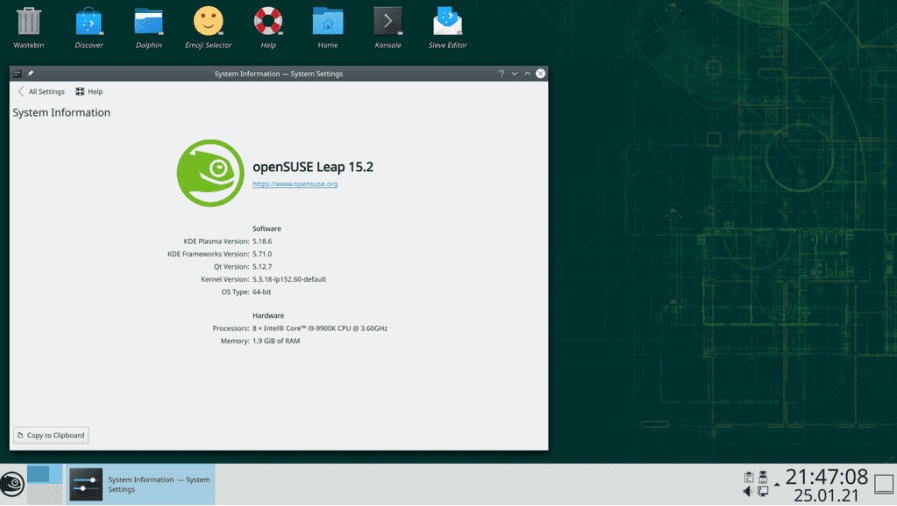
Other Articles:
11 Most Popular Linux distros of the year 2021- To use in 2022
5 Best free-to-use Linux Server distributions for 2022
4 Best Linux Distros for Android Studio Developers
8 Best Linux distros for .Net Core development


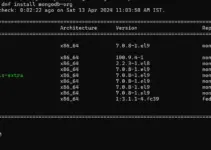
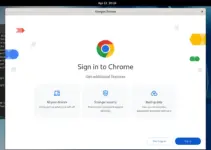


Thanks for your useful post. It was very good and helped me a lot in finding the Linux distribution I needed.